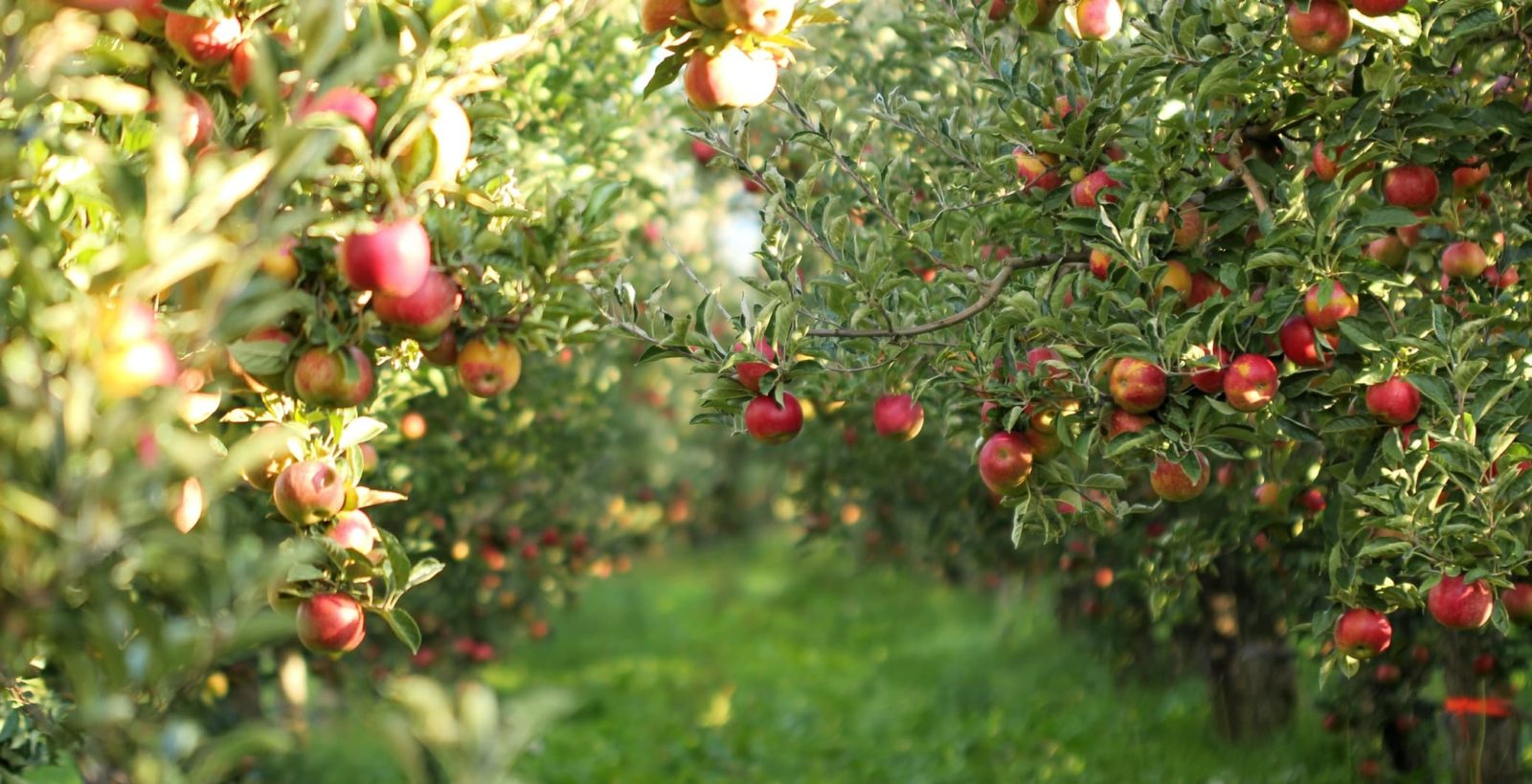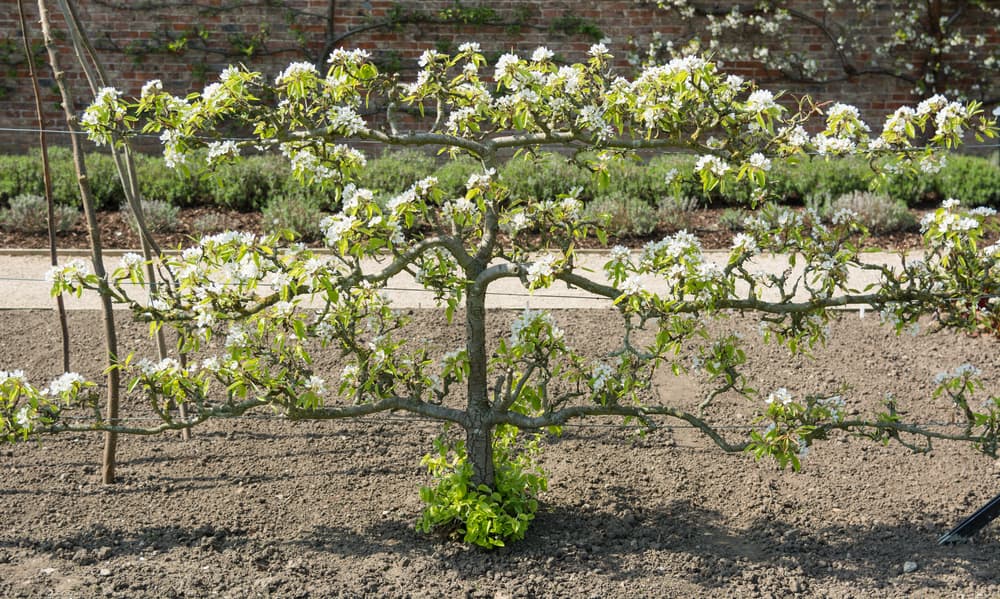Registered Arborist Dan Ori On The Reasons To Prune An Apple Tree (And How To Do It)


Elizabeth is a Permaculture Garden Designer, Sustainability Consultant and Professional Writer, working as an advocate for positive change. She graduated from the University of St. Andrews with an MA in English and Philosophy and obtained a Diploma in Applied Permaculture Design from the Permaculture Association.
Reviewed By DAN ORI

Dan has over 27 years’ under his belt caring for plants and gardens. Working as a Horticultural Instructor and Consultant, he draws on a diverse range of experience that includes working as a Head Gardener, Tree Surgeon, Garden Centre Trouble Shooter, and writer of academic papers. Dan has a Level 3 Diploma in Horticulture and is currently a candidate for the RHS’s most prestigious award – The Master of Horticulture.
Contributions From JULIE BELLEMANN

Julie and the team strive to do more for the community than just grow trees. Described as a ‘social enterprise tree nursery’, Sheffield Fruit Trees is a not-for-profit organisation that is working towards planting more edible trees across the whole of Sheffield to connect more people to their food.

Tom's nursery specialises in a range of fruits, including apples. The nursery has been certified Organic by the Soil Association and has been featured in The Guardian and The Daily Telegraph for its work.
IN THIS GUIDE
Apple trees can be a great, relatively low maintenance option for many temperate climate gardens, but learning how to prune effectively will keep your tree healthy.
Apple trees, especially once established, require little time and effort.
If you place your apple tree in the right place, it will likely need little care from you – but there are a few annual jobs to take care of, and pruning is one of those jobs.
Why Prune an Apple Tree?

Garden apple trees are typically pruned for a number of reasons and if you are clear about your reasons for pruning, this can help you do so correctly and effectively.
“Pruning is a big deal for people, as many don’t understand how trees grow and what to do with them,” says Tom Adams, the owner of Tom Adams Fruit Tree Nursery.
“Think about why you actually want to prune the tree and go from there.”
According to registered Arborist Dan Ori, the main reasons to prune an apple tree include:
- Improving the health of the tree
- Creating a desired form (including establishing a leading leader and notching)
- Reduction and thinning to maintain a tree form
- Removing potential failure points (including poor branch-unions)
- Dealing with a nuisance (blocking light, low branch etc)
- Stimulating new growth
- Checking growth (stop, remove, brutting, ringing, nicking)
- Removing unwanted growth including Suckers (from the base/belowground/below the rootstock), epicormic (from a clear trunk), and water shoots(from a dormant/latent bud)
- Stimulating the development of fruit buds
- Removing of buds to reduce leaf or more likely fruit growth
- Fruit thinning and removal
- Ensuring the tree carries fruit in a healthy harvestable way
- Increasing airflow through the tree
- Use as part of a regenerative practice (coppicing and pollarding)
The first of these is definitely the most important, and will be a type of pruning required for all apple trees.
Pruning For Health

The primary goals when pruning an apple tree for health are two-fold.
Firstly, you will prune to create a tree without dead, damaged or diseased material.
By removing the ‘three D’s’ from the tree, you can keep it healthier, and ensure that the tree is able to put all its energy into flowering and fruiting successfully.
Dan Ori explains each of these in more detail below:
- Dead – “There could be a strong biodiversity case to argue that leaving dead wood in trees can increase habitat for fungal, insect and animal colonisation; however, we will normally prune out dead wood to prevent spread of potential disease, and remove the dangers of the deadwood naturally shedding and falling on something or someone.”
- Diseased – “With trees we use the term ‘diseased’ in a broad way to cover viral, fungal, and bacterial infections. As mentioned with dead wood, we remove this diseased wood to prevent its spread.”
- Damaged – “We remove damaged wood for safety reasons and to prevent further damage to the tree, damaged wood can also be an opportunity for rots, disease, and harmful insect/animal colonisation.”
Once any dead, damaged or diseased branches have been removed, you should next prune to create an open canopy and to prevent future damage or congestion problems.
- Prune to create a goblet-shaped structure on bush and standard tree forms. This allows light to penetrate the heart of the canopy more effectively. And can allow fruits to ripen well and increase yield later in the year.
- Remove branches that rub up against others causing damage when moving in the wind, or which are touching or almost touching.
- Judiciously thin the branches to create an open structure. A bird should be able to fly between all branches. Look at an apple tree from all angles and remove branches and twigs as required to open up the canopy.
- Shorten the growth of the previous year on each primary branch by about one-third, to a bud facing in the right direction. This encourages the development of healthy new branches and fruit-producing spurs.
“Always keep sharp tools and make sure your cuts are clean to avoid any bacteria or diseases coming in,” says Julie Bellemann, a co-op member from Sheffield Fruit Trees.
Pruning For Size

If you have a mature and overgrown apple tree in your garden, you may wish to prune to reduce the size of a particular tree.
You may wish to reduce the size of an apple tree because it has outstripped local resources and needs to be smaller for its own best health.
You might also prune an apple tree because it is casting too much shade, or competing too vigorously with other plants nearby.
Or you might prune because a particular apple tree is obscuring your view, or simply because it has grown too large to harvest easily.

When pruning a mature apple tree to reduce size, it is important to be patient – some very overgrown mature apple trees will need to be pruned in stages over several years.
Avoid taking off more than 1/3 of the canopy in one pruning session, even when a more drastic reduction in size is desired.
Taking too much material off all at once can damage the trees, and put them under strain.
It can also be counterproductive as heavily pruned apple trees can put on a lot of new vertical growth, which can spoil the look and shape of mature trees.
“Prune to keep a nice open tree to allow maximum sunlight and air flow around the tree,” Tom suggests.
Renovation pruning can breathe new life into an older tree as well as reducing its size.

You may also wish to regulate size once a tree has reached an optimum size for the rootstock onto which it has been grafted.
Regulated pruning maintains an ideal size without affecting the fruiting potential of the tree.
In general, a rule of thumb with regulated pruning is to prune out no more than 10-20% of the canopy each year.
Pruning laterals on overly vigorous trees can also help check their growth.
Pruning For Shape

On bush and standard trees, pruning for shape is usually a simple aesthetic consideration.
Just take a step back and look at the overall shape of the tree as you prune for health or size.
“Establish the shape of your tree as early as you can,” says Julie.
“Prune off the main leader where you want the crown of your tree to start, and then shape it over the next few years.
“Once the shape of the tree is established, look at how it grows. You might not need to prune your tree very much every year.”
If you are training a young tree into a particular form, then pruning will be a little more complex.
Intricacies of formative pruning will depend on the specific trees you have chosen to grow, and the shape you wish it to take.
Apple trees can be trained into espaliers, fans, pyramids, columns/cordons or even into step-over hedges if a dwarfing rootstock has been used.
Tip-Bearers & Semi-Tip Bearers
“Apples will bear their fruit from fruit buds along the branches, from the tip of the branches, or a mix of both,” adds Dan Ori.
“A common example of a tip-bearing/semi-tip-bearing cultivar is ‘Bramley’s Seedling’.
“With tip bearers, you would not normally reduce the length of branches as this will result in little or no fruit the in the coming year, instead in winter, if you feel it is congested you would remove one in three/four branches of the current year’s growth to thin out the structure.
When To Prune An Apple Tree

“Winter pruning promotes growth,” says Tom.
“Where you make a pruning cut is where strong growth will start during the growing season.”
Bush and standard apple trees should be pruned for health, formative pruning (for young bush/standard trees) regulation pruning (to maintain size) and renovation pruning (or overgrown mature trees) should be carried out during the dormant period, between November and March.
In areas with wetter winters, it can be a good idea to wait until late winter or very early spring, as Julie shares:
“Avoid pruning on wet days or just before a bad frost. Other than that, fruit trees can technically be pruned all year round, but winter is the most common time.”
However, apple trees are generally resilient, and, unlike other fruit trees like plums and cherries, will not typically experience any problems after being pruned any time during the winter months.

Bush or standard forms which are overly vigorous may additionally be pruned in summer.
In this type of summer pruning, more vigorous laterals longer than 30cm are reduced in length by around half all over the tree between mid-August and September.
Shaped apple trees in restricted forms -espaliers, fans, pyramids, cordons etc. are typically pruned in summer to maintain their shape.
This type of pruning is undertaken in mid to late August, once the bottom third of new shoots has become stiff and woody and the possibility of secondary growth is reduced.
The goal is to cut back new shoots to maintain shape, and allow light to reach maturing fruit.
Winter vs Summer Pruning
Dan Ori argues that when to prune will depend on the species of fruit tree, but for apples and pears:
“Winter pruning happens after leaf fall and before buds burst open with new leaves in the spring, this would probably take place in December, January, and February in the UK.
“Winter pruning should be about health, form, and stimulating growth rather than fruit bud formation.
“Summer pruning is normally undertaken in a short period around the end of July to mid-August in the UK.
“Summer pruning should be about fruit bud formation and checking growth.”
You could think of it over time as pruning at winter for healthy leaves and pruning during summer for plentiful fruits.
Choosing The Right Tools

Pruning methods and timings will depend to a large degree on the apple tree variety you are growing, and on your goals.
Remember, methods will differ depending on the reasons for pruning, but no matter what type of pruning you are undertaking on your apple tree, certain things remain the same.
One important thing is to make sure that you have the right tools for the job. All tools must be clean, and, crucially, must be sharp.

Blunt pruning tools can do a lot of damage to your tree. Make sure you have sharp secateurs, loppers (and pruning saw where larger branches must be removed) for the job.
Thinking about the pruning requirements for a particular apple tree can help you decide whether or not a particular tree will be the right choice for you and your garden.
Typically, standard or bush forms will require the least work, and are the easiest to prune.
